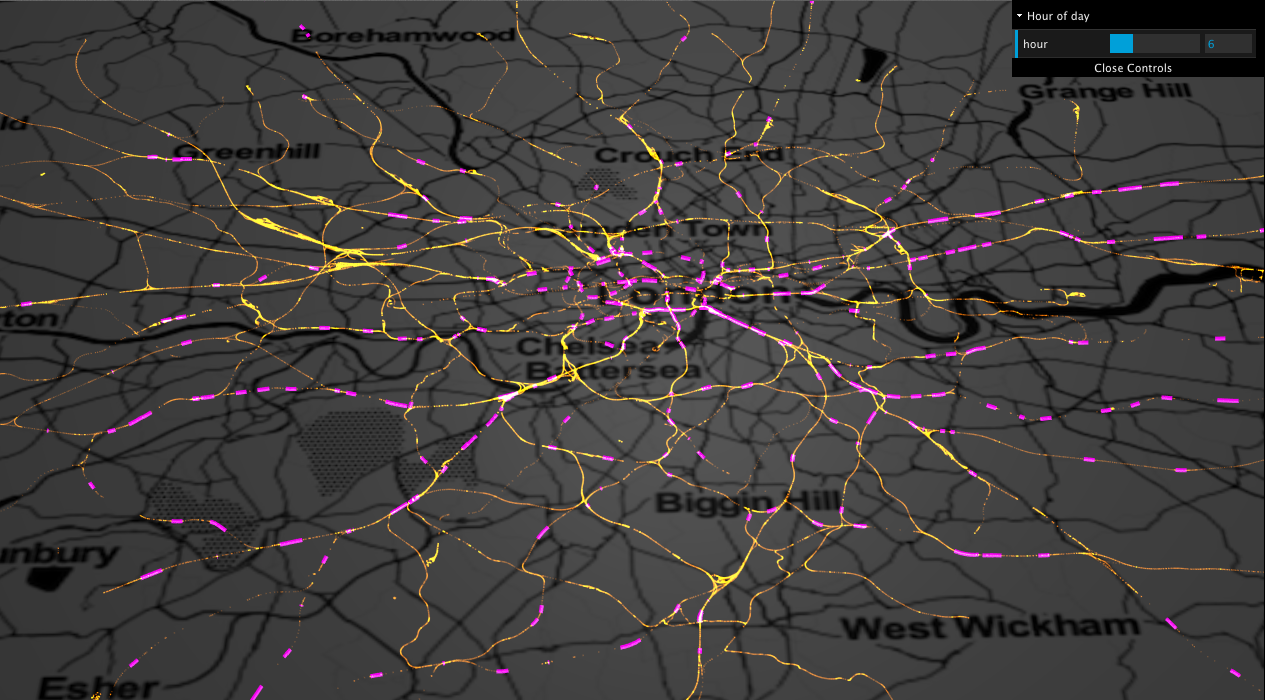The growing number of mobile devices equipped with GPS sensors having broadband internet access, allow users to actively participate and create content through mobile applications and location based services. Whether users are uploading geotagged photos via Flickr or Instagram, checking in at a venue with Foursquare or commenting on a local event via Twitter. These emerging, inexpensive and widespread sensor technologies have created new possibilities to infer mobility data from crowd sourced information.
In a current research project, we developed a framework to detect human mobility transportation hubs and infer public transport flows from unstructured georeferenced social media data using semantic analysis and spatial clustering techniques.
Please click on the image to watch the video
The video of our WebGL visualization shows increasing counts of network matched social media posts clustering outside London and moving into the center between 6-12 am and 6-12 pm. This typical commuting behavior can be detected along the whole railway network while posts between 12-6pm are spatially concentrated along the inner transportation network of London.
This quite promising research has been achieved by PhD students within the Crowd Analyser graduate school funded by the state of Baden-Württemberg and will be presented during these years ACM SIGSPATIAL Geocrowd Workshop in Dallas. Further information in detail is available within the linked publication below:
Steiger, E. Ellersiek, T. Zipf, A. (2014): Explorative public transport flow analysis from uncertain social media data. Third ACM SIGSPATIAL International Workshop on Crowdsourced and Volunteered Geographic Information (GEOCROWD) 2014. In conjunction with ACM SIGSPATIAL 2014. Dallas, TX, USA. http://dx.doi.org/10.1145/2676440.2676444



